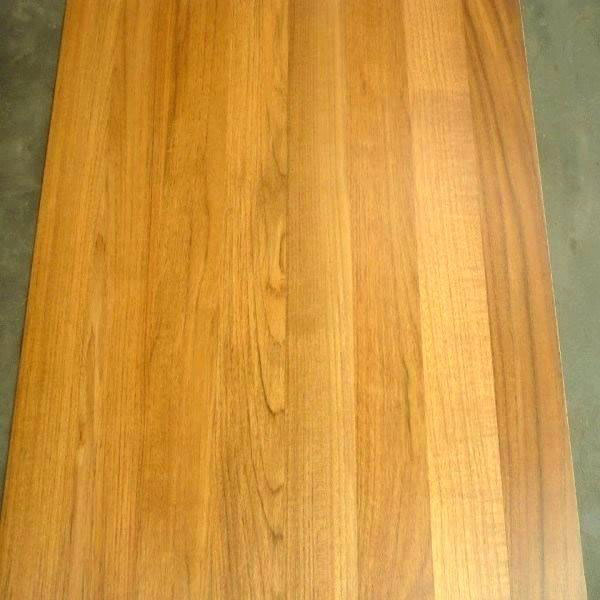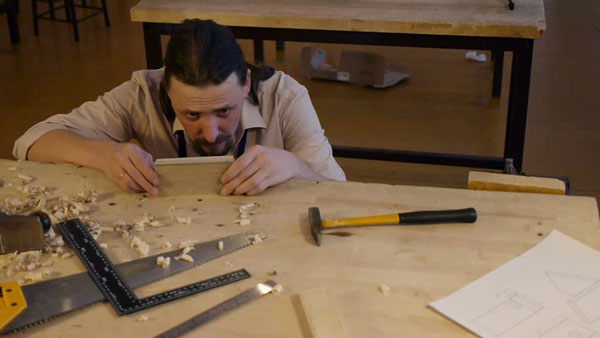
Wood is one of the most ancient building materials. Before the invention of cement, wood was the most used material in the construction industry. The natural beauty and long-lasting nature of wood can bring warmth and beauty to our everyday décor of the home.
There are many types of wood available in nature. Broadly wood is classified as hardwood and softwood. Hardwood comes from deciduous tree that have broad leaves, produces fruit or nut, and are generally inactive in the winter. Softwood comes from the coniferous trees. These trees are also known as evergreen trees and leaves of trees do not fall till the new one grows. One of the popular hardwoods in the Indian subcontinent is teak wood. Here we have given brief information on teak wood, its properties and its applications.
Teak Wood
Teak wood is a tropical hardwood. Tectona grandis (Teak) is native to south and southeast Asia, mainly India, Sri Lanka, Malaysia, Indonesia, Myanmar, Thailand, and Bangladesh. It is also cultivated in many countries in African continent and the Caribbean countries. It is estimated that the global plantations of teak are three million hectare with India holding the highest share around 44% followed by Indonesia (33%) (Palanisamy, Hegde & Yi, 2009). The versatility of the teak enabled it to become one of the most preferred lumbers in the modern woodworking industry. Teak is easily cut, has unmatched rot and termite resistance, and is very durable.
Properties of Teak Wood
01. Colour/Grain:
Teak wood is yellow to dark brown in colour, it darkens as it ages. It has straight grain but sometimes may have interlocking or wavy grain. Raw cut teak wood has low luster.

02. Hardness:
According to United States Department of Agriculture Forest Service (2010), teak wood has Janka hardness of 4100 Newtons, which is high as compared to that of Mahogany (2800 Newtons). Janka hardness test gives the resistance of a wood sample towards denting and wear. You can know more information regarding Janka Hardness test in ASTM D143 – 94.
03. Rot Resistance:
Teak has high rot resistance due to the natural oils present in it. It has high durability due to high resistance towards rot.
04. Termite Resistance:
Teak wood has high termite resistance. The natural oils in teak repel the termites and hence it is very much preferred for making furniture.
05. Workability:
It is very easy to work with, but causes blunting of equipment used for cutting. Although it has natural oils present in it, teak wood finishes and glues well. Sometimes it has to be wiped with solvent to remove excess oils.
06. Odour:
It has a leather-like smell when milled.
07. Maintenance and Cleaning:
It requires low maintenance and is very easy to clean. Regular dusting and wiping with a damp cloth will maintain the shine of the surface. However, stains have to be removed with caution.
08. Cost:
Due to its high durability and strength, and limited availability, teak wood is expensive as compared to other hardwoods.
Advantages of Teak Wood
The advantages of teak wood are as follows:
01. Aesthetic Value:
With its straight grain and golden colour, teak wood is great to touch even when compared to other man-made alternatives such as particle board, plywood, blockboard, etc. Other hardwoods have nearly the same strength but, because of its aesthetics, teak wood is more popular.
02. Strength:
Teak wood is very strong when compared to other hardwoods. Hence it can be used for timber framed construction as a structural member or element such as beam, column, etc
03. Termite Resistance:
Due to its natural property of termite resistance, no extra chemical is required to keep it safe from termites. This is one of the major advantages for its application for making furniture.
04. Heat Insulation:
Unlike other materials, teak wood does not get too hot or too cold. This is beneficial as in tropical countries like India; it can keep the house cool. Also for cold countries like USA it can keep interiors warm.
05. Good Workability:
Teak wood has good workability which is an important property from carpenter’s point of view. It can be easily hand-carved to form different artistic shapes. For furniture which requires good artistic shapes and designs, teak wood can be easily used.

06. Easily Gets Along with Metals:
Teak wood has good compatibility with iron and other metals. It does not let the metals corrode due to moisture, as it does not absorb moisture from the atmosphere unlike other woods.
07. Durability:
Teak wood has very high durability as compared to other softwoods and hardwoods. It can last for a century. Many very old structures made of wood are still functional.
Disadvantages of Teak Wood
The disadvantages of teak wood are as follows:
01. Very Expensive:
One of the major disadvantages of teak wood is its cost. It is very expensive due to its low availability. Due to industrialization, forests are being cut down and hence shortage of wood for near future is generated which lead to high cost of wood. As teak wood is aesthetically appealing, it has higher cost.
02. Tools Get Blunt:
As teak wood is hard, the wood-working tools get blunt while working with it. Tools have to be sharpened regularly.
03. Needs Regular Polishing:
Teak wood needs to be polished regularly to maintain its beauty. It is recommended to first use sandpaper and then apply polish on the surface.
Uses of Teak Wood
Teak wood has the following uses:
- For structural wood for the wooden framed house.
- Used in solid wood flooring.

- Making doors, windows, partitions, deck railings, panelling, wall cladding, etc.
- Making outdoor furniture like garden benches and lounge chairs. In Indoor furniture, it is used in beds and wardrobes.
- Veneer production
- Boat building
In brief, teak wood is a popular hardwood for furniture, owning to its beauty and durability. Termite resistance property adds up to its durability. Although the cost of teak wood is very high, in projects where budget is not an issue, teak wood is preferred over all other hardwoods.
Also Read:
9 Tips to Buy Furniture for Your Home
Living Room & Its Furniture for Your Home!
Guide to a Stylish Dining Room & its Furniture in a House!
Nails vs Screws: Which is Better for Furniture?
Image Courtesy: Image 2 – choxi, Image 3 – Shutterstoclk
FAQs
1. Why is teak wood so expensive compared to other hardwoods?
Teak wood is expensive due to its limited availability, high demand, and exceptional durability. Its natural resistance to termites and rot, combined with aesthetic appeal and long lifespan, make it a premium material, especially for furniture and construction.
2. How does teak wood resist termites and rot naturally?
Teak contains natural oils and resins that repel termites and prevent fungal decay. These oils make it highly resistant to environmental damage, giving it inherent durability without the need for additional chemical treatments.
3. Is teak wood easy to maintain?
Yes, teak wood is relatively low-maintenance. Regular dusting and wiping with a damp cloth are usually enough. However, to preserve its shine and color, periodic polishing and careful stain removal are recommended.
4. Can teak wood be used for outdoor furniture?
Absolutely. Due to its high resistance to moisture, pests, and weather conditions, teak wood is ideal for outdoor furniture like garden benches, patio sets, and deck chairs. It remains durable even in harsh climates.
5. What are the common applications of teak wood in construction and interiors?
Teak is used for a wide range of purposes, including:
- Structural elements like beams and columns
- Solid wood flooring
- Doors, windows, and panelling
- Indoor and outdoor furniture



































